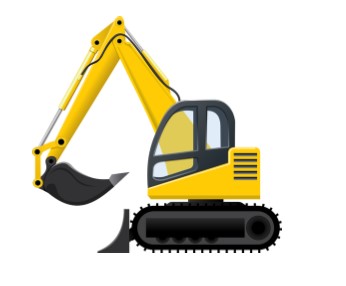Heavy equipment is a cornerstone of construction work, playing a critical role in various tasks, from excavation to demolition. However, with great power comes great responsibility. The sheer size and power of heavy machinery can pose significant safety risks on a construction site.
1. Comprehensive Training for Operators
The first and foremost step in heavy equipment safety is ensuring that all operators are adequately trained. This training should cover:
- Equipment Operation: Understanding the controls, capabilities, and limitations of each machine.
- Safety Protocols: Knowledge of site-specific safety rules, emergency procedures, and proper use of personal protective equipment (PPE).
- Regular Refreshers: Even experienced operators should undergo periodic training to stay updated on the latest safety practices and equipment technologies.
2. Regular Equipment Inspection and Maintenance
Routine inspections and maintenance are crucial to prevent accidents caused by equipment failure. Some essential steps include:
- Daily Inspections: Before using any equipment, conduct daily checks on key components like brakes, tires, lights, and hydraulic systems.
- Scheduled Maintenance: Follow the manufacturer’s guidelines for regular maintenance to keep equipment in top condition.
- Immediate Repairs: Address any identified issues immediately to avoid potential hazards.
3. Proper Communication and Signaling
Clear communication is essential on a busy construction site, especially when heavy equipment is in operation. Here’s how to ensure effective communication:
- Hand Signals and Radio Communication: Use standardized hand signals and ensure all workers are familiar with them. For larger sites, use two-way radios to maintain clear communication.
- Spotters: Designate a spotter to help navigate equipment in tight spaces and prevent blind spot accidents.
- Awareness of Surroundings: Operators should always be aware of their surroundings and use mirrors, cameras, and alarms to avoid collisions.
4. Use of Personal Protective Equipment (PPE)
All workers on a construction site, including those operating or working near heavy equipment, should wear the appropriate PPE, such as:
- Hard Hats: To protect against falling objects.
- High-Visibility Vests: To ensure that operators can see them clearly.
- Steel-Toe Boots: To protect feet from heavy objects and equipment.
- Hearing Protection: To prevent hearing loss due to loud machinery noise.
5. Enforce Safe Operating Practices
Safe operating practices are essential to minimizing risks associated with heavy equipment. Key practices include:
- No Unauthorized Use: Only trained and authorized personnel should operate heavy machinery.
- Load Limits: Never exceed the equipment’s load capacity to prevent tipping or mechanical failure.
- Speed Limits: Adhere to speed limits, especially in congested areas or when working near other workers.
6. Establish and Maintain Clear Work Zones
Clearly defined work zones help separate heavy equipment from other site activities and reduce the risk of accidents. This can be achieved by:
- Barriers and Signs: Use barriers, signs, and cones to designate equipment operation areas.
- Limited Access Areas: Restrict access to areas where heavy equipment is in use to only those necessary.
- Traffic Control Plans: Develop a traffic control plan to manage the movement of equipment and vehicles.
7. Emergency Preparedness and Response Plans
Accidents can happen, even with the best precautions in place. Having an emergency response plan is crucial:
- Emergency Drills: Conduct regular emergency drills to prepare workers for various scenarios.
- First Aid Training: Ensure that workers are trained in basic first aid and CPR.
- Emergency Kits: Keep well-stocked emergency kits readily available on-site.
9. Continuous Improvement through Safety Audits
Regular safety audits and assessments help identify potential hazards and improve safety protocols:
- Regular Safety Audits: Conduct routine inspections to identify and mitigate safety risks.
- Worker Feedback: Encourage workers to report any safety concerns or suggestions for improvement.
Heavy equipment safety in construction is a shared responsibility that involves everyone on-site. By implementing comprehensive training programs, maintaining equipment, enforcing safety protocols, and using technology, construction sites can significantly reduce the risk of accidents and create a safer working environment.
If you, or anyone you know needs training, please refer to our training page at phoenixoshatraining.com/services/ .
Published by OSHA Phoenix on September 4, 2024


